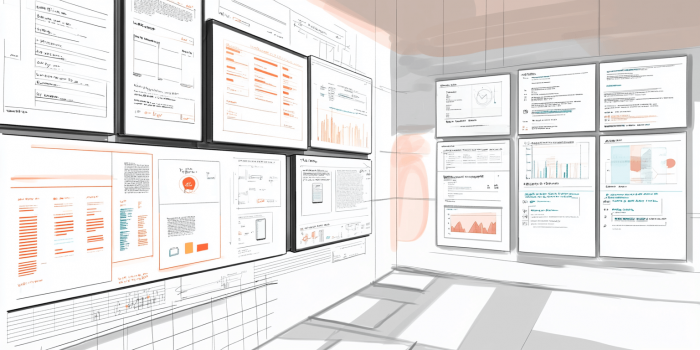- Proper structure as the foundation of intuitive navigation and strong sales
- What to consider when creating sections and subcategories
- Filtering, catalog structure, and SEO optimization in a systematic store layout
- Common mistakes in structuring an online store
- Key stages in organizing the category structure of an online store
- What determines the cost of development services – what you need to know
- Why you should trust the QuatroIT team with your category structure
The user’s first interaction with an online store usually begins with browsing the menu and searching for the relevant section. If the category structure is clear and consistent, the buyer easily finds the desired product and continues browsing without confusion or unnecessary steps. This creates a sense of convenience, increases trust in the store, and sets the stage for completing a purchase. Well-organized pages are also essential for SEO optimization, as search engines are better able to interpret content and users are more likely to find the site in search results. But how exactly should the category structure in an online store be organized, what does it require, and which mistakes should be avoided? There are many questions, so let’s break each one down in more detail.

Proper structure as the foundation of intuitive navigation and strong sales
Well-structured categories create a clear user journey through the site. From the first seconds of interaction, the user quickly navigates the catalog and moves directly to the desired page, avoiding random clicks or disorientation. As a result, bounce rates decrease, page depth increases, and the purchasing process feels smooth and in control. Search also becomes faster and more comfortable, significantly increasing the chances of completing an order within the same store.
A smooth and logical structure also encourages users to explore more products by transitioning naturally from one section to another. When categories are arranged logically and subcategories are intuitive, browsing becomes a natural part of the user experience. Well-designed filters and a predictable section hierarchy keep users engaged, encouraging repeat visits and additional purchases. This leads to longer sessions, higher conversion rates, and an increased average order value.
What to consider when creating sections and subcategories
When advising clients on why a responsive online store matters, we emphasize the importance of both the logic behind section placement and the specific user flows within the catalog. The structure must be easy to browse and consistent at every level, while also following these key principles:
- Search-friendly phrasing. Category names should reflect how users typically search for products. Otherwise, navigation may feel unnatural, complicating interaction from the very start.
- Optimal depth. Even with a wide range of products, the classification should remain intuitive, requiring as few steps as possible to reach a product without losing logical structure or overloading the menu.
- Consistent style. All catalog sections should follow a unified format, maintaining visual and structural consistency to prevent confusion while browsing.
- Relevant product listings. Each category page must contain actual product listings. Linking to empty sections negatively impacts the user experience and erodes trust in the store.
- Category relationships. Subcategories should not duplicate the content of main categories. Instead, they should consistently refine the selection, helping users navigate to specific products without feeling like their time is being wasted.

Filtering, catalog structure, and SEO optimization in a systematic store layout
Filtering should function as part of the overall structure, helping narrow down options without disorienting the user. Filters should be configured using attributes and tags that do not generate separate URLs or disrupt the catalog’s logic. This eliminates duplicate content and preserves structure and consistency during indexing. As a result, users see only relevant products without unnecessary redirections, while search engines can accurately read and rank real content sections without mistaking them for technical duplicates.
A well-balanced catalog structure directly impacts SEO because all its elements must work together as a cohesive system. Short, clean URLs make it easier for both users and search engines to navigate the site, while internal linking connects different sections, supporting logical navigation and a unified structure. At the same time, category templates and product pages should follow a standardized layout, which supports consistent indexing and improves the overall ranking of the site in search results.
Common mistakes in structuring an online store
Before ordering the development of a category structure and sorting logic, it’s important to be aware of several common mistakes. Among them, we highlight the following key issues:
| Navigation breakdowns. | Users enter sections from which it’s hard to return or navigate to related categories, disrupting the overall browsing experience. |
| Duplicate categories. | The same products appear in multiple unrelated sections without a clear logic, confusing users and creating a sense of disorder. |
| Excessive segmentation. | The structure contains too many subcategories with minimal content, making navigation overloaded and difficult to follow. |
| Disorganized filters. | The filtering system lacks a logical structure or duplicates the main category functions, making the selection process unclear. |
| Lack of unified logic. | Categories are created without a consistent approach, leading to a disjointed and ineffective structure. |
It’s important to understand that a sound site structure isn’t something that emerges during the content-filling stage – it must be built from the start as a foundation for navigation, filtering, and SEO. Fixing it after launch is difficult and resource-intensive, so it’s best to entrust the process to a professional team that understands catalog logic, search engine requirements, and user behavior with a focus on the specific needs of the business.
Key stages in organizing the category structure of an online store
When offering turnkey website development, we take a comprehensive approach to each project and strictly follow this step-by-step process:
- Product content evaluation. We conduct a detailed analysis of the assortment, identify logical relationships between products, and define the basis for structured grouping.
- Section hierarchy creation. We build a multi-level structure in which every transition has a clear purpose and aligns with user expectations.
- Attribute definition for filtering. We select parameters that allow for effective filtering without duplicating the functionality of main categories.
- URL and breadcrumb logic. We establish a consistent system of URLs and navigation elements that maintain context and simplify backward navigation.
- Category template development. We design page templates with user behavior, content presentation, and SEO requirements in mind.
- Testing and adaptation. We analyze real catalog usage scenarios, evaluate the usability of transitions, and adjust the structure based on analytics data.

What determines the cost of development services – what you need to know
The cost of an online store on WordPress or any other platform, depending on the agreement with the partner, is based on several key factors. These include the overall structure, number of sections, functional complexity, the need for custom design, and the level of third-party service integration.
Content preparation is equally important, especially for projects with a large number of products or non-standard data presentation logic. That’s why we approach pricing individually, always considering the client’s specific needs and preferences.
Why you should trust the QuatroIT team with your category structure
Every project we take on comes with the following advantages for our partners:
- Comprehensive structural approach. We develop the structure as part of the site’s overall logic, taking into account business goals, user expectations, and search engine requirements.
- Focus on real user behavior. We work with businesses across industries and understand how users navigate websites, basing our structure on real interaction patterns, not theoretical models.
- Transparent collaboration. We never impose pre-made solutions but offer well-justified options based on your specifics, coordinating each stage and ensuring full clarity for the client.
- Platform versatility. We work effectively with both popular CMSs and custom-built systems, tailoring our approach to your budget, technical environment, and long-term goals.
- Post-launch support. We continue to support projects after release, monitor performance, and make adjustments based on user behavior or changes in store strategy.
Want to order the development of an online store with a well-thought-out structure, clear category breakdown, and flexible adaptation to business needs? Then the QuatroIT team is your go-to partner. We approach each project individually, always aiming for the best result and closely listening to every request and suggestion. So don’t wait – reach out today. The experts at QuatroIT are at your service!










